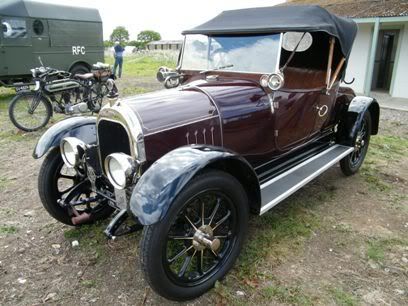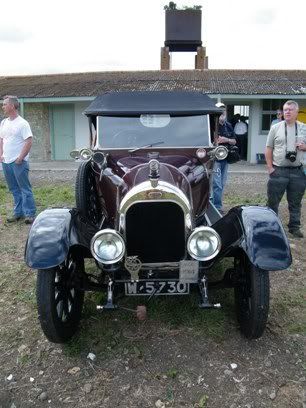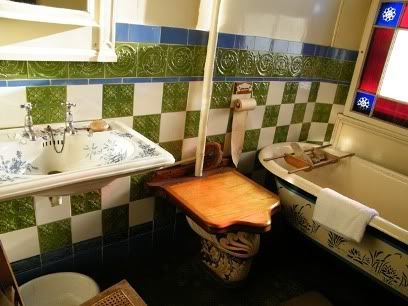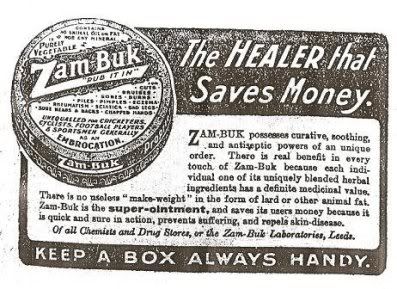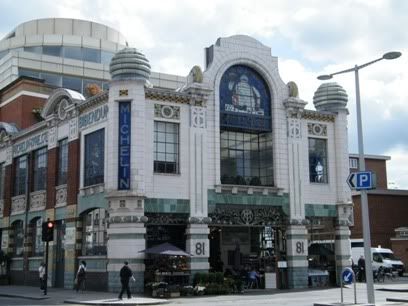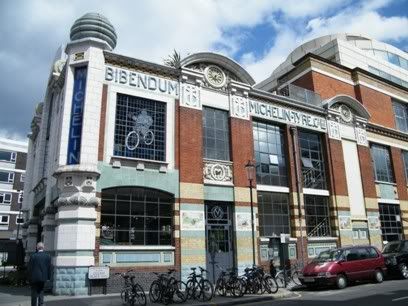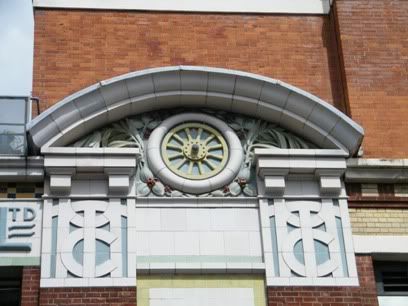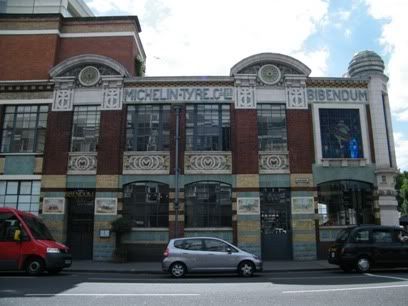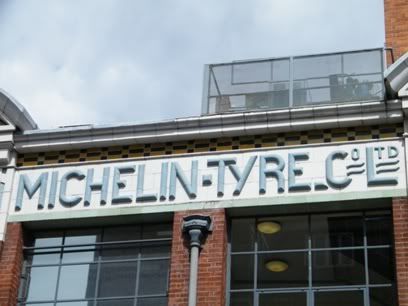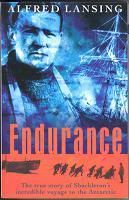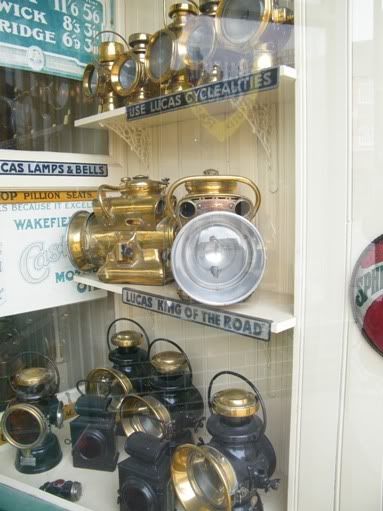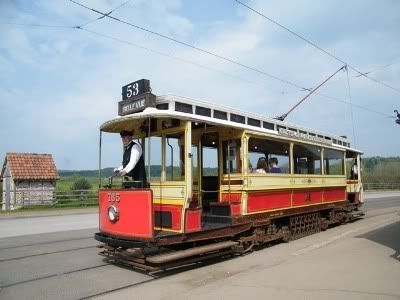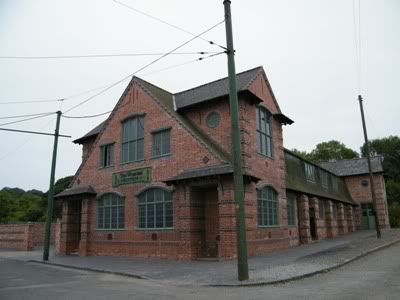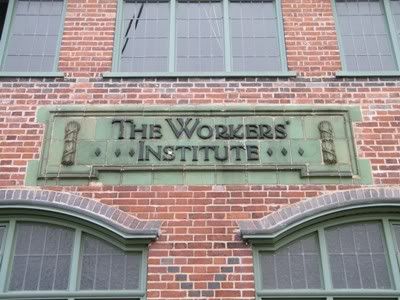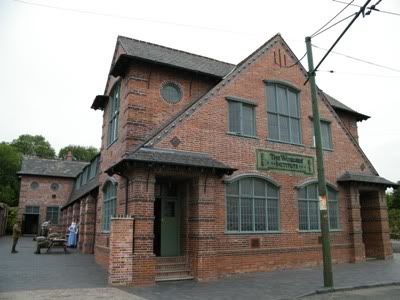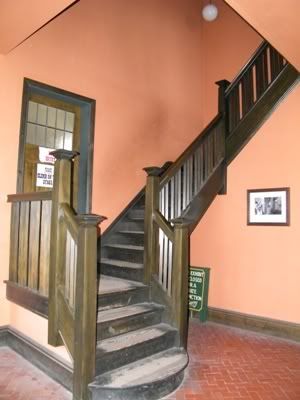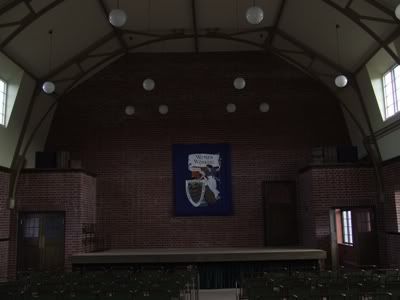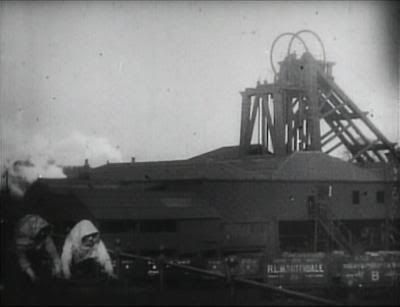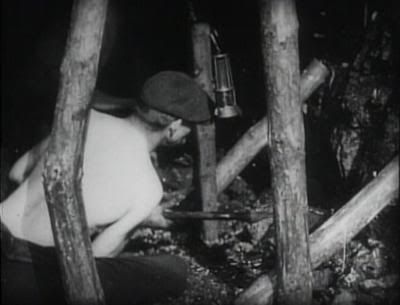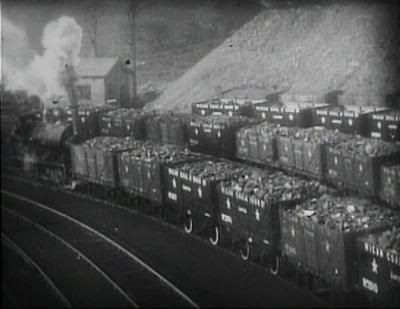A blog about the Edwardian era in the UK - objects, buildings, people, literature, film and all other aspects of the Edwardian era (covering 1901-1919)

Tuesday, 20 September 2011
1914 Perry 11.9
This very modern looking two seat car is a 1914 built Perry, a company which manufactured cars in Tyseley, Birmingham, from 1913 to 1916. After the Great War the design for the Perry 11.9 was bought by Bean, who continued to produce similar looking vehicles in the West Midlands during the 1920's. This particular Perry was seen at the Royal Flying Corps Aerodrome at Stow Maries, Essex in May 2011
Monday, 19 September 2011
Edwardian Bathroom
This recreated modern Edwardian bathroom is fitted into one of the recreated terraced houses of Ravensworth Terrace, rebuilt at the Beamish Open Air Museum. The bathroom is typical of an upper-middle class house and for the time depicted (1913) would be a fairly new installation, complete with a shower fitted to one end of the bath (just out of shot)
Sunday, 18 September 2011
Downton Abbey Series 2
For those who watch Downton Abbey, a historical drama set in the Edwardian era, the second series starts on ITV (here in the UK) tonight. The last series ended with the start of the First World War, and the second series picks up from there and will show the changes in social life on the home front during the Great War, and also what happens to the characters who serve in the armed forces or nursing services
http://www.itv.com/downtonabbey/
Several of my friends are extras in this series so i'll be keeping a good look out for them!
http://www.itv.com/downtonabbey/
Several of my friends are extras in this series so i'll be keeping a good look out for them!
Friday, 16 September 2011
Zam-Buk
1917 Advertisement for Zam-Buk
This fantastically named ointment is about as Edwardian as it gets - this green, uniquely smelling salve was a sort of 'cure all' ointment for cuts, bad skin and other ailments, and features often in Edwardian magazines and other literature containing advertisements for the Leeds manufactured Zam-Buk. It is now available again, produced by Rose & Co. Apocathery and is very popular once again, so buy some while you can - a small tin lasts a very long time, i've had my tin for nearly a year and despite using it very often still have most of the tin left!
http://zam-buk.com/
1908 Advertisement for Zam-Buk
Thursday, 15 September 2011
Michelin House, 1911
Now known as 'Bibendum', Sir Jasper Conran's Resturant in South Kensington, London, Michelin House was commissioned in 1909 and completed in 1911 as the permanent British headquarters for the French motor car tyre company of Michelin, famous for their mascot the 'Michelin Man', or to give his proper name, 'Bibendum'. The building retains it's strong history and is one of my favourite Edwardian buildings. I haven't been fortunate enough to eat in the restaurant but the cafe in the atrium at the entrance is superb and very well priced (well, for central London, and is very close to the Science Museum, Natural History Museum and Victoria and Albert Museum. For more information, visit Bibendum's website;
http://www.bibendum.co.uk/
Wednesday, 7 September 2011
Endurance: Shackleton's incredible voyage to the Antarctic
In 1914, the main part of the Imperial Trans-Antarctic Expedition set sail from the UK in the ship Endurance, bound for Antarctica. Bound for Vahsel Bay in the Weddell Sea, the plan was for Sir Ernest Shackleton, who already had Antarctic experience from previous expeditions, and a party of men would make their way across Antarctica via the South Pole, resulting in a journey across the entire Antarctic continent which had never been done before (when the Expedition left, and up until 1956, only 9 men had ever reached the South Pole, all members of Scott or Amundsens Teams as part of the Race to the Pole in 1911/12). The Ross Sea Party would lay store depots on the other side of the Pole from the Australasian 'side' of Antarctic using the ship Aurora. After leaving the Whaling Station at South Georgia on 5th December 1914, the Endurance, its crew, and the Weddell Sea Party of the Imperial Trans-Antarctic Expedition dissapeared. They were expected to be heard of again by November 1915, it wasn't until May 21 1916 that Shackleton and two other members of the Expedition reached the Whaling Station at South Georgia by mountain after an epic journey, starting with the Endurance becoming trapped in ice and resulting in the crew and party setting camp on moving ice floes and using the three ships boats to travel first to Elephant Island where a camp was set up, and then one boat, the James Caird, crewed by Shackleton and others sailing to South Georgia where a smaller party made the arduous mountain crossing to the Whaling Station, from where relief was sent as soon as possible to rescue all the men. Not a single man died from the crew of the Endurance or the Weddell Sea Party. The Ross Sea Party were not so fortunate with three out of ten of the party dying.
This superb book by Alfred Lansing tells the story of the Endurance crew and the Weddell Sea Party and is, despite a number of books regarding the Expedition and its fate, considered the best. The gripping and harrowing story is told very well and the book is highly reccomended for one of the most heroic stories from the heroic age of Antarctic exploration, which is considered to have taken place between 1897 and 1922, including the Edwardian era expeditions by Scott and Shackleton
Monday, 5 September 2011
Lucas Lamps - 'King of the Road'
From 1902 Lucas (or to give it's full name, Joseph Lucas Ltd), a well known lamp maker, started making car accessories, naturally including lamps for motor cars but also magnetos, horns and other electrical equipment. A Lucas designed lamp for a bicycle in 1879 was called the 'King of the Road' as a marketing tool and this name was used for many of Lucas' top end lighting products, although inevitable was applied by the general public to all Lucas lighting products. This display of Lucas lighting products is seen in the 1913 Motor Garage Showroom at Beamish Living Museum
Sunday, 4 September 2011
1914 'California' Manchester Tram 765
In service at the Beamish Living Museum on a very hot day in April 2011 was Tram 765, a 1914 built 'California' type Tram built for Manchester Corporation Tramways. It was built as a single deck tram for use on tramway routes where low bridges were present, and has open seating compartments at each end for smokers - which are also great for riding on the Tram in hot weather, as I found out. After the Trams were replaced by Motor Buses in 1930, Tram 765 went into storage, and in 1960 was rescued from West Yorkshire and was preserved and restored by the Manchester Transport Historical Collection. The Tram is owned by, and usually in operation at, the Heaton Park Tramway in Manchester, where you can find more information and other photographs of their Tram collection
http://www.heatonparktramway.btck.co.uk/
Monday, 15 August 2011
Cradley Heath Workers' Institute, 1912
On June 10th 1912, the Countess of Dudley opened the Workers' Institute in Cradley Heath, West Midlands. Consisting of a large main hall, including a stage and a balcony for additional spectators, as well as offices, the Institute served as a centre for the workers of the area and their trade unions for many years, and became known to locals simply as 'the stute'.
Threatened with demolition in 2004 to make way for a bypass road, the building was moved to the Black Country Living Museum in Dudley, West Midlands, and rebuilt to look as it would have done nearly 100 years ago, and telling the story of the important Female labour disputes of the Edwardian era, including womens chain maker's strikes of 1910
Here you can find a BBC News article from 2006 announcing the rebuilding of the 1912 Cradley Heath Workers' Institute http://www.bbc.co.uk/blackcountry/content/articles/2006/01/19/cradley_heath_workers_institute_feature.shtml
Wednesday, 10 August 2011
A Day in the Life of a Coal Miner, 1910
Produced by the Kineto company on behalf of the London & North Western Railway Company in 1910, this early ten minute long film documents the workings of a typical coal mine in the Wigan area in 1910. The film starts with a miner leaving his family at the start of the day, then cuts to a scene showing the pit head, complete with coal trucks and winding gear. Then, preparations for the day are shown - lamps being locked (to prevent gas explosions underground - underground mining was, and still is in other countries, dangerous, and disasters with high death tolls were common), and then the miners descending.
Staged scenes filmed above ground for the purposes of the film give an impression of the cramped conditions experienced working at the coal face, cutting coal and placing it in a wheeled tub to be taken to the surface. Then, the tubs are brought to the surface where they are showed being taken out of the cages and wheeled away by boys. Several minutes of the film is then devoted to showing the women workers of the coal mine, both young and old, wearing long skirts and with distinctive shawls worn tightly across the head and shoulders making a sort of hood and scarf combination. A large extent of their work is shown - from pushing the heavy tubs of coal around, to sorting it and loading wooden props for use underground.
The end of the day is then shown, with the male coal miners coming to the surface and receiving their pay, as well as long lines of railway trucks loaded with coal departing the mine for travel to its final destination. The second to last scene shows the coal miner from the start of the film returning to his family safely after a day at work. The final scene shows the end product - a cosy fireside, with a middle/upper class family sat around the fire while the maid puts more coal onto it, and the family then enjoying the heat from it.
The film is available on the BFI's 'Early Cinema - Primitives and Pioneers' DVD, a compilation of 60 pre-1911 films http://filmstore.bfi.org.uk/acatalog/info_118.html
Subscribe to:
Posts (Atom)
